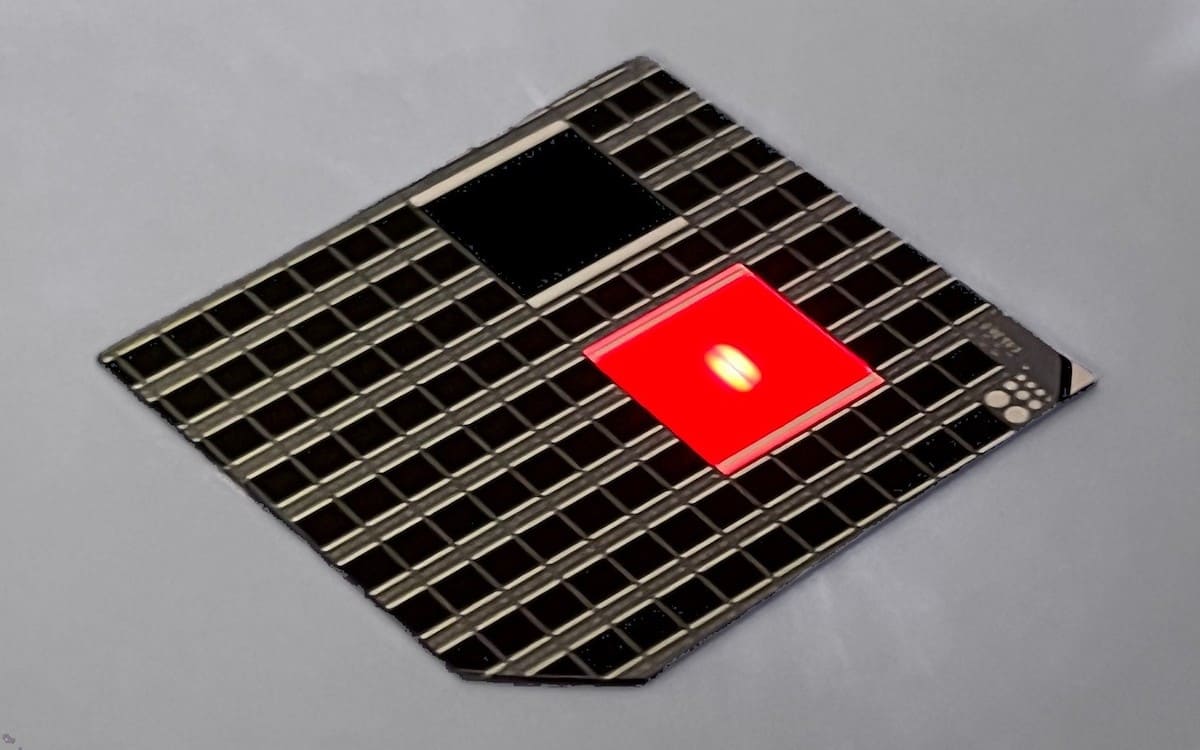
New breakthrough in indoor photovoltaic cells
Not just under direct sunlight. The next generation of solar cells is designed to perform efficiently indoors, where the only available light is diffuse or artificial. This is the focus of a well-defined segment of solar technology known as indoor photovoltaic. Once a niche application, it is now receiving renewed attention from the scientific community.
One of the latest developments comes from the Fraunhofer Institute for Solar Energy Systems ISE in Germany. There, a team of researchers combined findings from multiple scientific projects to produce an indoor solar cell with a conversion efficiency of 40%.
How indoor photovoltaic works
Unlike conventional modules that operate under solar irradiance levels of up to 1000 W/m², indoor photovoltaic cells are engineered to function efficiently under much lower light conditions, typically just a few milliwatts per square meter up to 1–2 W/m².
Naturally, lower incident energy results in lower power output. Still, this technology is proving essential for powering low-energy electronics. Indoor solar cells can autonomously operate wireless sensors and other smart devices within the Internet of Things (IoT) by efficiently converting ambient or artificial light into electricity. This makes them especially valuable in settings where replacing batteries or installing wired power sources is too costly or impractical.
High-efficiency, long-lasting GaInP indoor cells
Several tunable bandgap technologies have achieved high indoor conversion efficiencies, including perovskites. However, these often lack long-term stability in real-world conditions.
The Fraunhofer ISE team addressed this challenge by developing efficient, durable indoor solar cells using III-V compound semiconductors. Specifically, they focused on gallium indium phosphide (GaInP), which has a nearly ideal bandgap of 1.9 eV for indoor use.
Charge carrier dynamics in n-type and p-type GaInP
The study explored how electrons and holes behave in both n-type and p-type GaInP under conditions of low excess carrier injection. In such conditions, the concentration of light-generated electron-hole pairs is lower than the concentration of the majority carriers already present in the doped semiconductor.
In n-type semiconductors, electrons are the majority carriers and holes are the minority. In p-type materials, the roles are reversed.
“We discovered that a specific type of solar cell, the n-type GaInP cell, performs significantly better than its p-doped counterpart,” explained Malte Klitzke, lead author of the study and researcher at Fraunhofer ISE. “N-type GaInP cells retain charge carriers for longer and operate more efficiently even under low-light conditions. That’s why we were able to achieve such high indoor light conversion efficiencies in our experiments.”
More specifically, the n-type material exhibited minority carrier lifetimes two orders of magnitude higher under dim lighting, thanks to a significant reduction in non-radiative recombination.
Results and performance
Once tested, the n-type GaInP back-contact heterojunction cell maintained higher excess carrier densities. This led to improved fill factors (FF) and open-circuit voltages (VOC) compared to homojunction cells using p-type absorbers.
At an illumination level of 100 lux, considered quite low, the Fraunhofer ISE cell recorded a VOC of 242 mV and a 37.5% efficiency. That figure climbed to 41.4% at 1000 lux.
The study was published in Applied Physics Letters.